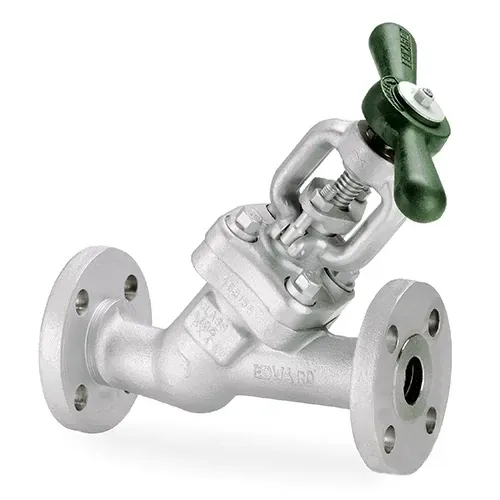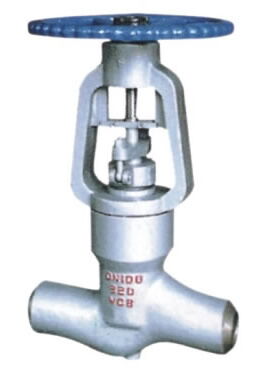In industrial processes, precise control over fluid flow is essential for ensuring system efficiency and safety. One of the most widely used components for this purpose is the angle globe valve. Known for its ability to regulate flow with high accuracy, the angle globe valve is a vital tool in various sectors, including oil and gas, power plants, chemical processing, and water treatment.
But what exactly is an angle globe valve, and how does it work? Let’s dive into the specifics of this critical valve, its different types, and the wide range of applications it serves.
An angle globe valve is a variation of the traditional globe valve where the inlet and outlet ports are perpendicular to each other, forming an angular design. This valve uses linear motion to move a closure member (typically a disk or plug) into and out of the valve seat to regulate the flow of fluids. The angular arrangement of the valve’s inlet and outlet ports makes it ideal for situations where space is limited, or where the valve can double as an elbow in the piping system.
In addition to its space-saving benefits, angle globe valves are also designed with features that minimize erosion, cavitation, and flashing damage. Depending on the specific design, they can have cage-style construction, expanded outlet connections, restricted trim, or outlet liners to improve performance and longevity under challenging conditions.

The mechanics of an angle globe valve revolve around the use of a movable disk or plug that controls the flow of fluid by either blocking or allowing it to pass through the valve. Here’s a breakdown of the key components and how they function:
The body of the angle globe valve contains the internal components and provides the structure for fluid flow. It is typically made from durable materials like stainless steel or cast iron to withstand high pressure and temperature conditions.
The valve seat is a fixed part that provides the sealing surface for the disk or plug. The disk moves vertically to either open or close the valve, allowing for flow control. The alignment of the disk with the seat ensures proper sealing when the valve is closed.
The movement of the disk in relation to the seat regulates the flow of fluid. When the disk is lifted, fluid flows through the valve; when the disk is lowered, the flow is stopped. The precise control allows for smooth modulation of the fluid flow.
The sealing mechanism ensures a tight seal when the valve is closed, preventing any leakage of fluid. This is critical in applications that involve hazardous or high-pressure fluids.
The flow path in an angle globe valve is designed so that the fluid flows through the valve in an angular direction. This distinct flow pattern is useful for specific applications where other types of valves might not fit or provide the same performance.
Angle globe valves come in various types, each tailored to specific operational needs. Some of the most common variations include:
This is the simplest and most common type, where the inlet and outlet ports are at a 90-degree angle. It is ideal for general applications requiring moderate flow control.
The Y-pattern valve features a different internal design, where the inlet and outlet are arranged in a "Y" shape. This design improves flow characteristics, reducing turbulence and pressure loss, making it suitable for high-performance applications.

In applications where leakage control is critical, the bellows-sealed valve uses a flexible bellows to prevent leaks around the stem. This design is essential in high-purity or hazardous fluid systems.
This valve type is used in high-pressure applications. The design ensures a tight seal that can withstand extreme pressures and temperatures, making it ideal for use in the oil and gas industry.

Cryogenic valves are specifically designed for use in low-temperature environments, such as in the transportation and storage of liquefied natural gas (LNG). These valves are capable of maintaining a tight seal even at cryogenic temperatures.
This type is designed for applications that demand high precision and reliability under extreme conditions. High-performance angle globe valves are typically used in industries like power generation and chemical processing.
Angle globe valves are used in a wide range of industries, each requiring specific performance characteristics. Here are some of the most common sectors and their applications:
The oil and gas industry relies heavily on angle globe valves for regulating the flow of crude oil, natural gas, and steam. These valves are integral to upstream and downstream operations, where they control the flow of fluids in pipelines, refineries, and storage facilities. The high-pressure and corrosive nature of these fluids demands valves that can withstand harsh conditions while providing accurate flow control.
In power plants, angle globe valves play a crucial role in managing steam and water systems. They are used for controlling fluid flows in cooling, heating, and steam generation systems. Their robustness and reliable performance under high temperatures and pressures make them ideal for use in power generation environments, where efficiency and safety are paramount.
The chemical industry deals with a wide variety of aggressive, corrosive, and hazardous fluids. Angle globe valves are designed to provide accurate flow control while resisting the damaging effects of chemicals. Their ability to handle high-pressure systems and their resistance to corrosion make them a popular choice for chemical reactors, pipelines, and mixing tanks.
In water treatment plants, angle globe valves regulate the flow of water through filtration systems, chemical dosing units, and other stages of the treatment process. They help maintain the correct flow rates, ensuring the proper treatment of water for safe consumption and environmental protection. These valves are especially useful in managing the flow of water under varying pressures.
Angle globe valves are also used in heating, ventilation, and air conditioning (HVAC) systems to regulate the flow of hot water or steam in heating coils and chillers. They help optimize energy efficiency in buildings and industrial complexes by providing precise control over fluid distribution in these systems.
In the food and beverage industry, angle globe valves are used to regulate the flow of liquids and gases in production lines. These valves ensure that the process runs smoothly and meet hygiene standards while maintaining accurate flow control in brewing, fermentation, and other processes.
Angle globe valves offer several advantages over other types of valves, including:
These valves provide highly accurate control over the flow of fluids, which is critical in many industrial processes that require specific flow rates.
The angular design makes angle globe valves ideal for situations where space is limited. In many cases, the valve can also serve as an elbow, saving both space and material costs in piping systems.
Angle globe valves are built to withstand high pressures, temperatures, and corrosive environments, making them suitable for use in demanding industries like oil and gas, chemical processing, and power generation.
These valves can be used for a wide variety of applications across different industries, from high-performance to cryogenic settings, making them highly versatile.
Reduced Erosion and Cavitation: With specialized trims and outlet liners, angle globe valves can minimize the damaging effects of erosion, cavitation, and flashing, which can extend the life of the valve and reduce maintenance costs.
Angle globe valves are integral components in a wide range of industries, offering precise flow control, durability, and versatility. Whether used in oil and gas production, power plants, chemical processing, or water treatment, these valves provide critical performance under challenging conditions. By understanding the different types of angle globe valves and their applications, industries can select the right valve to ensure system efficiency, safety, and reliability.